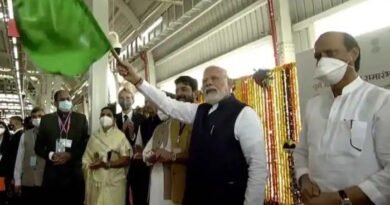A capitalist fix for China’s economic problems
Tackling the current slowdown calls for action on multiple fronts. Two-thirds of Chinese citizens already live in towns. Supply-driven expansion of towns and dwellings will no longer work as it used to. China needs reliable financial products, not an endless supply of additional housing, to serve as saving vehicles
New Delhi September 1 dmanewsdesk: For China, this time is different. Past slowdowns could be tackled with a dose of stimulus that spawned yet more towns, highways, and housing blocks that patiently waited for occupants to trickle in. This time, China’s troubles are more systemic and call for restructuring of different parts of the system. China needs a capitalist fix that regular champions of the free market love to treat as a bug of the system, but is actually a feature. China needs to nationalise big-time losses, impose additional taxes, and engineer a steady, but higher level of inflation.
China faces deflation; its property giants that have bloated on debt are defaulting on debt service, and even going bankrupt. This puts at direct risk debt worth trillions of dollars, and spreads uncertainty through the entire financial system. Local banks could go bankrupt. Failure to deliver homes pre-paid for by homeowners could see these borrowers default on their loans from banks. Vendors of steel, cement, and paint to the property giants could see their receivables turn into trash, and their market, vanish.
Collapse of the realty market would put local government finances in serious trouble: 37 percent of their total fiscal revenue in 2021, came from selling land use rights and collecting land-related taxes, according to the Peterson Institute for International Economics. Cutbacks on governance and social programmes could sow distress and resentment.
Why should we in India fret about the economic mess in a hostile neighbour? Because China’s growth performance can act as locomotive or brake for global growth. Growth of one percentage point raises global output by $255 billion, in the case of the US economy, by $180 billion, in China’s case, and by $34 billion, in India’s case (at market exchange rates). While India is the growth leader in the world, it would have to register a growth rate multiple times as large to provide the same stimulus to world growth as 1 percent growth in the larger economies: 5.3 percent to match China’s 1 percent and 7.5 percent to match America’s 1 percent.
When China Stumbles
When China grows, it guzzles parts and commodities from the rest of Asia, Africa and Latin America, and high-end consumer goods, cars, and industrial machinery from the US and Europe, fuelling growth and purchasing power in all these economies, creating potential demand for Indian exports, and feeding Indian growth. When China stumbles, the reverse would happen.
A moderate Chinese slowdown could see some portfolio flows relocate to India, benefitting those who invest in the markets, even as those whose earnings come from the real economy suffer. But, were the Chinese economy to tank, capital would take fright and scurry back to their home countries from across the emerging world, offering equal opportunity misery to all classes.
Tackling the current slowdown calls for action on multiple fronts. Two-thirds of Chinese citizens already live in towns. Supply-driven expansion of towns and dwellings will no longer work as it used to. Nine out of ten Chinese people already own their own homes. A fifth own a second home. China needs reliable financial products, not an endless supply of additional housing, to serve as saving vehicles.
How to avert the financial panic that defaults by collapsing realtors could generate? The state should nationalize them, and pay off debts, writing off equity. This exercise should be financed by creating fresh government debt. Holders of realtor debt would be relieved to hold government paper, instead.
Support Overseas Projects
How to wind down the excess capacity in cement, steel, etc that would result from scaled-down home building? Large parts of the world, especially in Africa, Asia, and Latin America, need infrastructure that would happily absorb the excess capacity and increase productivity, generating additional income to service the debt and more.
The Belt and Road Initiative that Beijing hoped would open outlets abroad for its surplus production has run aground in debt and distrust. China could, instead, give soft loans through the World Bank system, and regular, untied loans via the New Development Bank and the Asian Infrastructure Investment Bank. When the funded projects take off, the resultant addition to demand for steel, etc would lift Chinese production, even if not directly.
If realty ceases to be the primary driver of growth, how are local governments to generate revenue? China needs a new revenue source. According to OECD, only 6 percent of its tax collections come from income tax. The average is 16 percent for the Asia-Pacific, 18 percent for 31 countries of Africa, and 24 percent for the OECD. At 21 percent, the proportion of output China collects as tax is low. Even Mongolia collects more. As much as 28 percent of China’s tax take comes from value-added taxes. There is scope to reduce VAT and increase personal income tax, calibrated to yield net additional tax. More taxes collected at the central level should devolve down to lower levels of government.
Monetary and fiscal policy should coordinate to keep inflation steady, but mildly elevated. This would erode the real cost of servicing debt, and gradually bring down the debt-GDP ratio.
China is not entering any middle-income trap. Rather, the economy needs a structural change. The technocratic demands are not so complex. However, managing the entailed social and behavioural changes calls for deft political management, not diktat issued from the Olympian heights of Mt Xi.
Source: moneycontrol




